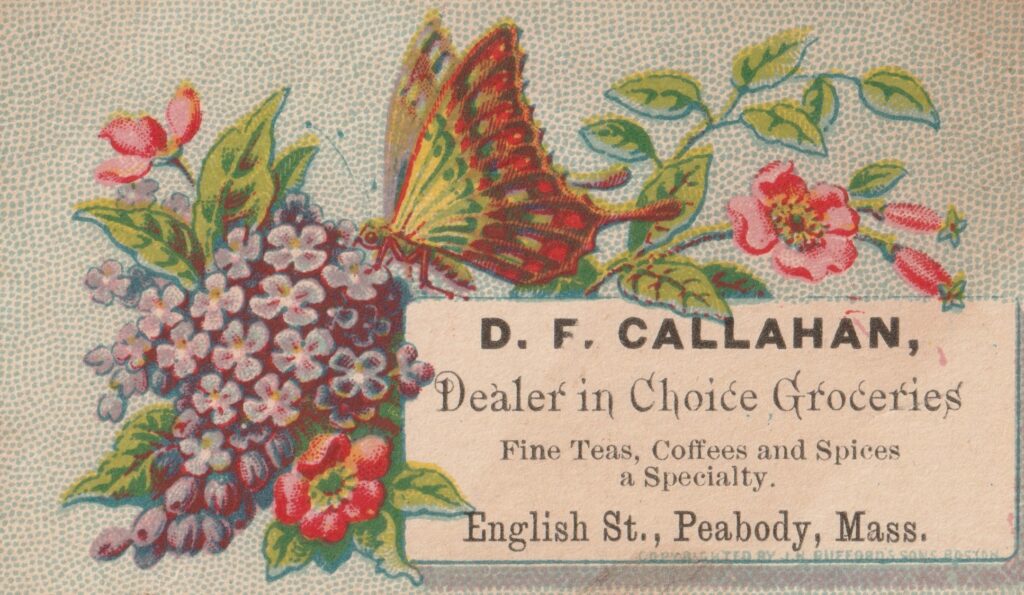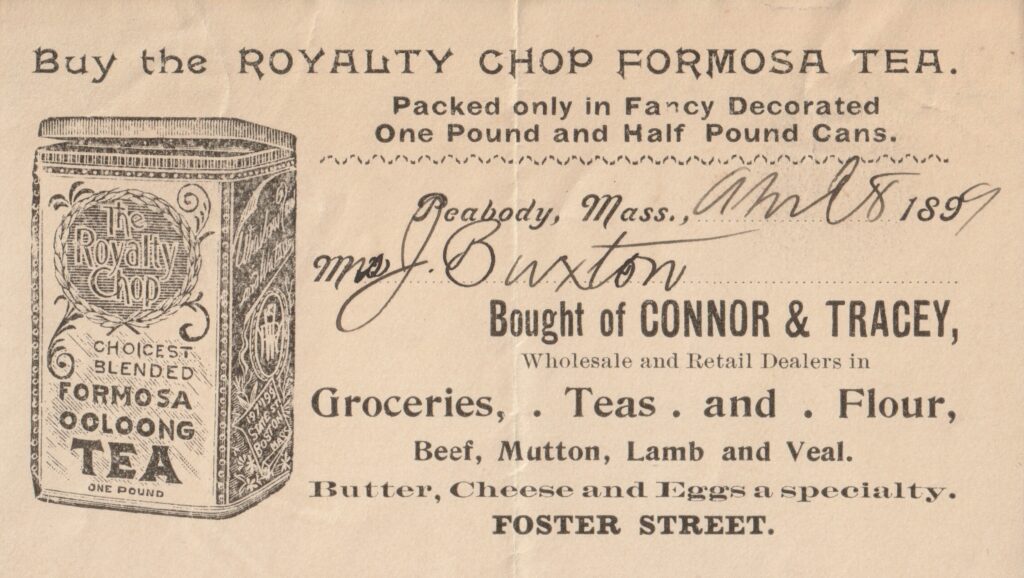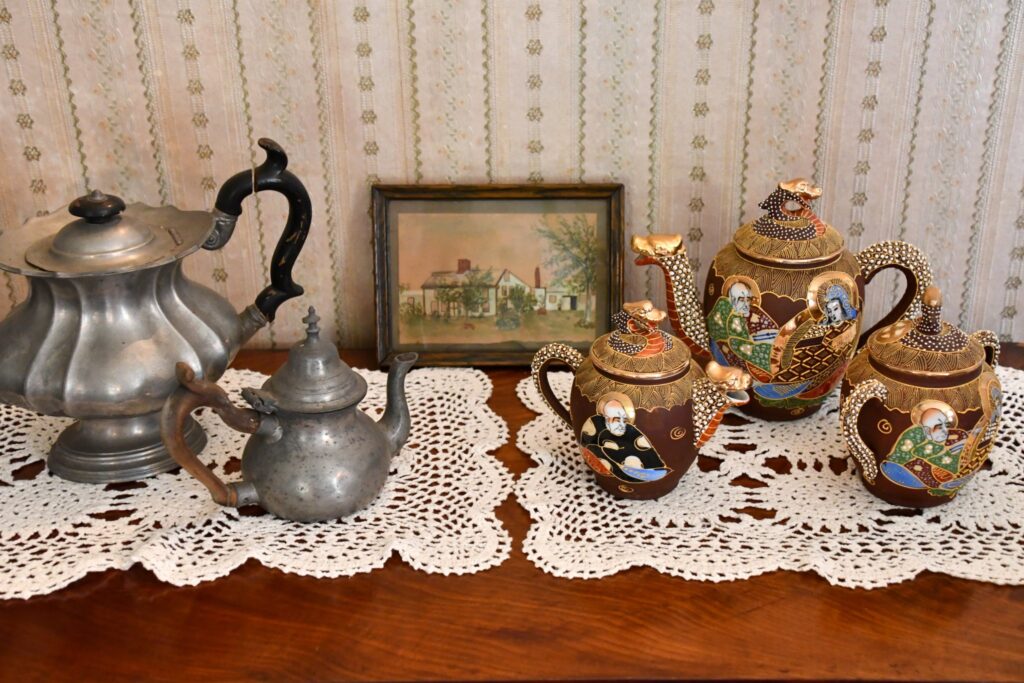This week on the blog, we talk about the history of tea.

Tea set from our collection, circa 1890
The first cup of tea is often to attributed to Chinese Emperor Shennong in 2737 BCE. He encouraged his subjects to boil their water before drinking, and it is said that a leaf fell into his cup. He enjoyed the taste so much that it became a regular habit. During the Song dynasty (960-1297 AD), tea was listed as one of the seven necessities of life.
Tea was first imported to Europe by Portuguese explorers in the 1500s. When English King Charles II married Portuguese Princess Catherine of Braganza in 1662, she introduced tea to the nobility of Britain. Tea was considered a luxury through the early 1700s. With the success of the East India Trading Company, Great Britain had the monopoly for importing tea from China, India and other Asian countries.
Tea drinking was such an important part of British identity. When English settlers came to America, they brought their love of tea. For example, George Washington drank 2 to 3 cups of tea each morning with his breakfast. His ledger from 1757 noted he ordered 6 tea pots and 12 lbs of tea from England.

Above excerpt: The Essex Gazette, Salem, Mass. January 18, 1774; this article encouraged the colonists to use only American plants for tea.

Advertisement, D.F. Callahan, Grocer, English Street (now Paleologos), circa 1900, with his “fine teas”

Advertisement, Connor and Tracey of Foster Street, 1899
Today, we are seeing a resurgence in the popularity of “high” tea. The ritual of tea drinking slows us down in our fast-paced world. So, I encourage you to pick up a nice hot beverage and relax, as many have done before you.

Photograph by Cheryl Millard, 2022
Mrs. Felton’s Tea, Felton Junior House
References:
Jane Pettigrew. A Social History of Tea. The National Trust, 2000.
Julia Skinner. Afternoon Tea: A History. Rowan and Littlefield, 2019.
